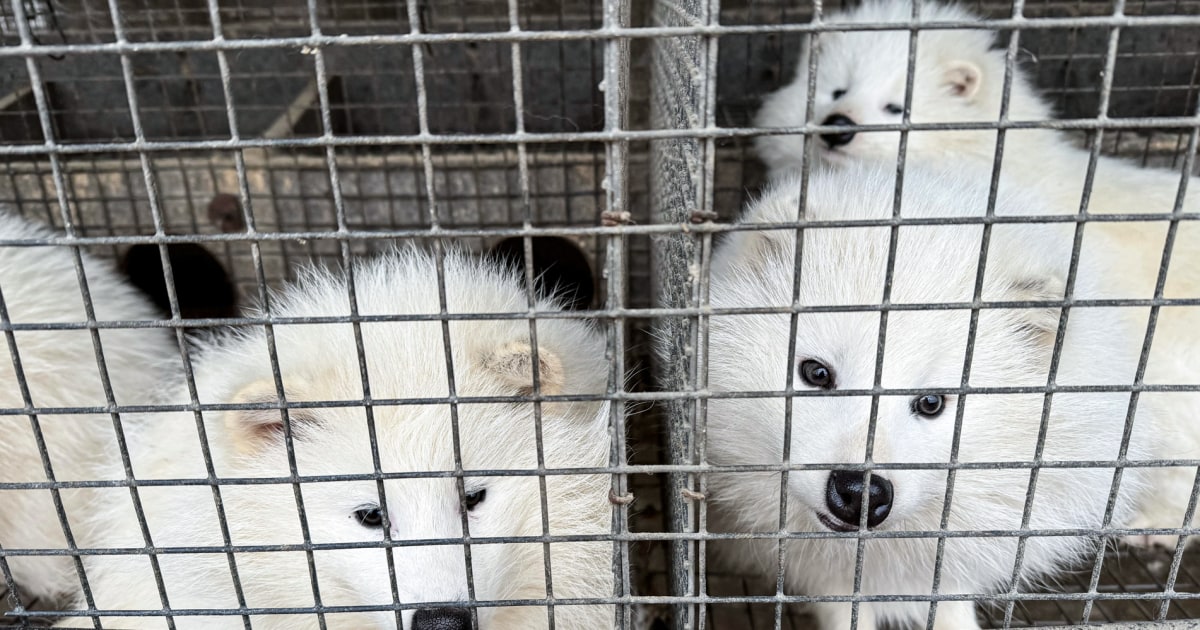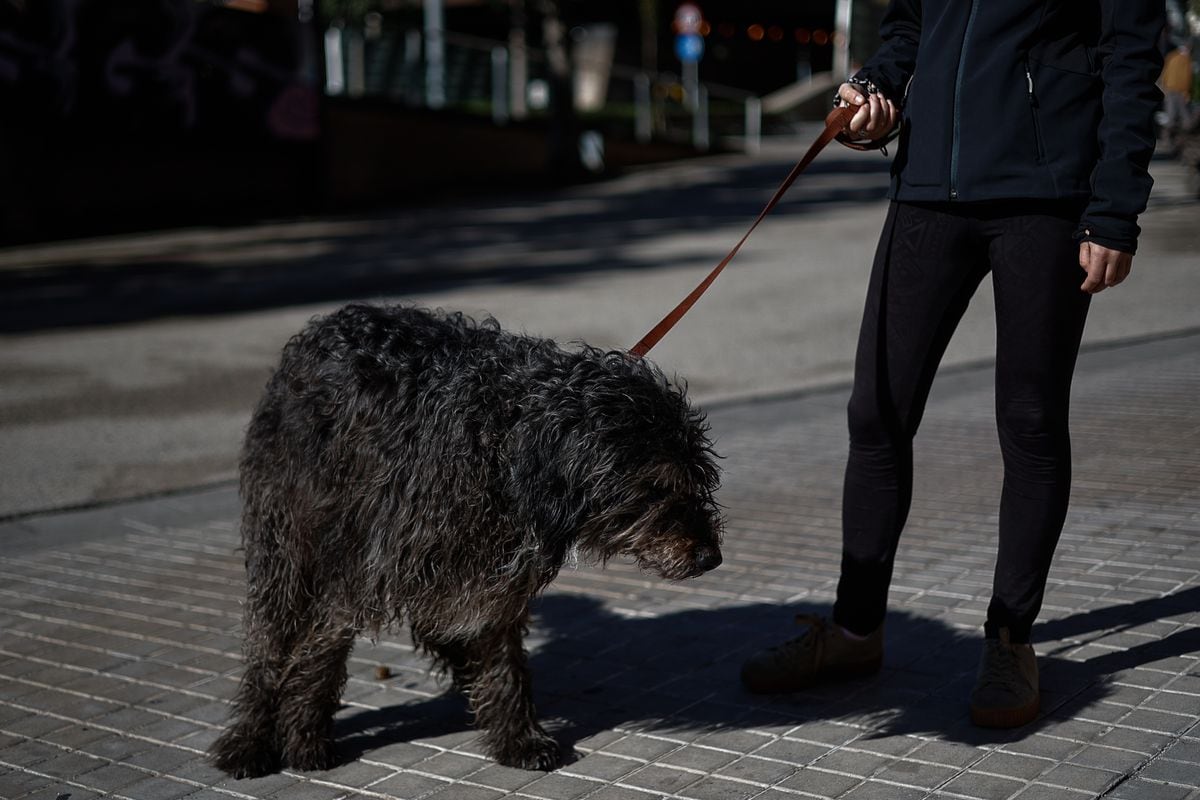Chinese government scientists released a long-awaited study on Wednesday of a market in the city of Wuhan, acknowledging that animals susceptible to the coronavirus were there at the time the virus emerged.
But the scientists also said it remained
unclear
how the pandemic started.
Fritzi the raccoon plays with water at the home of veterinarian Mathilde Laininger in Berlin, Germany, on January 27.
REUTERS/Hannibal Hanschke
The study, published in the journal
Nature
, focused on swabs taken from surfaces in early 2020 at the Huanan Seafood Wholesale Market, a large market where many of the first known COVID patients had worked or shopped.
The Chinese scientists had published an early version of their genetic analysis of those samples in February 2022, but at the time downplayed the possibility of animal infections on the market.
The scientists, many of whom are affiliated with the Chinese Center for Disease Control and Prevention, also wanted to publish their data in a peer-reviewed journal.
And as part of that process, the scientists uploaded more genetic sequence data to a large international database, the database's administrators said last month.
A few weeks after the data was made public, a team of international scientists who had been studying the origins of the pandemic said they had stumbled upon the sequences.
They found that the samples that tested positive for the coronavirus contained genetic material from animals, including large amounts that matched the raccoon dog, a fluffy mammal sold for its fur and meat that was known to spread the coronavirus.
That analysis, the subject of a report posted online in late March, did not prove that the raccoon dog itself was infected or that animals transmitted the virus to people.
But it established that the raccoon dogs deposited their genetic signatures in the same place where the genetic material of the virus was left.
Many virologists argued that this hypothesis was consistent with one in which the virus passed to people from a wild animal illegally traded in the market.
Apparently, the international team's analysis hastened the publication of the Chinese scientists' study on the same data:
The paper appeared on the Nature website on Wednesday with a note saying it had been accepted for publication, but was still an "
early version
" and had not yet been edited.
Several authors of the article affiliated with the China CDC, William J. Liu, George Gao and Guizhen Wu, did not respond to requests for comment.
In their first version of the article, from February 2022, the Chinese authors did not mention finding raccoon dog genetic material in market swabs, which were taken from walls, floors, metal cages, and cars.
Other than that, they said the data did not point to
any infected animals.
But in Wednesday's version, just over a year later, they wrote that the study "confirmed the existence of raccoon dogs" and other coronavirus-susceptible animals on the market.
Many scientists believe that existing evidence suggests that these animals probably acted as
intermediate hosts
for the virus, which probably originated in bats.
But they also say that the evidence does not completely rule out a hypothesis that people transmitted the virus to animals in the market.
The Chinese authors underlined that
uncertainty
in the new study.
They also raised the idea that the virus could have reached the Wuhan market in
frozen food
packages , also known as cold chain products.
Many scientists consider this hypothesis highly unlikely, but China has promoted it because it lends credence to the idea that the pandemic could have started outside the country and arrived via imported food.
"The possibility of a possible introduction of the virus into the market via infected humans, or cold chain products, cannot yet be ruled out," the article states.
The study also included other unlikely findings, outside scientists said in interviews Wednesday.
For example, that the swabs contained genetic material from a number of animals that were almost certainly not present on the market, such as
pandas, chimpanzees and mole rats.
Alice Hughes, an associate professor at the University of Hong Kong specializing in conservation biology, said the inclusion of these animals suggested either that the authors had misclassified the genetic material or that the samples had been contaminated
during
sequencing in a laboratory. .
"The greatest value of this work is the fact that it frees up a data set for other scientists to look at more carefully and responsibly," Hughes said.
"Given the glaring errors of this analysis, it has not been done with sufficient care to be confident in any of the results."
Doubts
Asked how Nature's peer review process had handled the species findings, a journal spokesperson said the authors included a disclaimer that the list of species identified on the market "was not final.
" and
further analysis was required.
For international scientists who first reported finding evidence of raccoon dogs in COVID-positive swabs last month, the latest Nature study leaves unanswered a number of important questions about the methods used by the Chinese team to
analyze
the sequences.
However, the publication, as well as an earlier version of it posted online by Chinese scientists last week, provided key new data, such as the number
of swabs taken
from each market stall, according to Alexander Crits-Christoph, a former researcher. postdoc and computational biologist at Johns Hopkins University who helped lead the international team's analysis.
With that information, Crits-Christoph said he and his collaborators were able to confirm an important finding:
Swabs taken in a corner of the market where wild animals were sold were more likely to test positive for the virus, a result that could not be explained simply because Chinese researchers had taken more samples in that corner, he said.
"It's a very impressive data set and its significance is quite high," Crits-Christoph said of the market samples.
"And so, I think it's good that these data have been published in the scientific record, even if I don't agree with all the interpretations."
c.2023 The New York Times Company
look also
Chinese cities are overwhelmed with debt, but they keep getting into debt
The origin of the coronavirus: a report of samples from the Wuhan market reveals that there was COVID in wild animals







